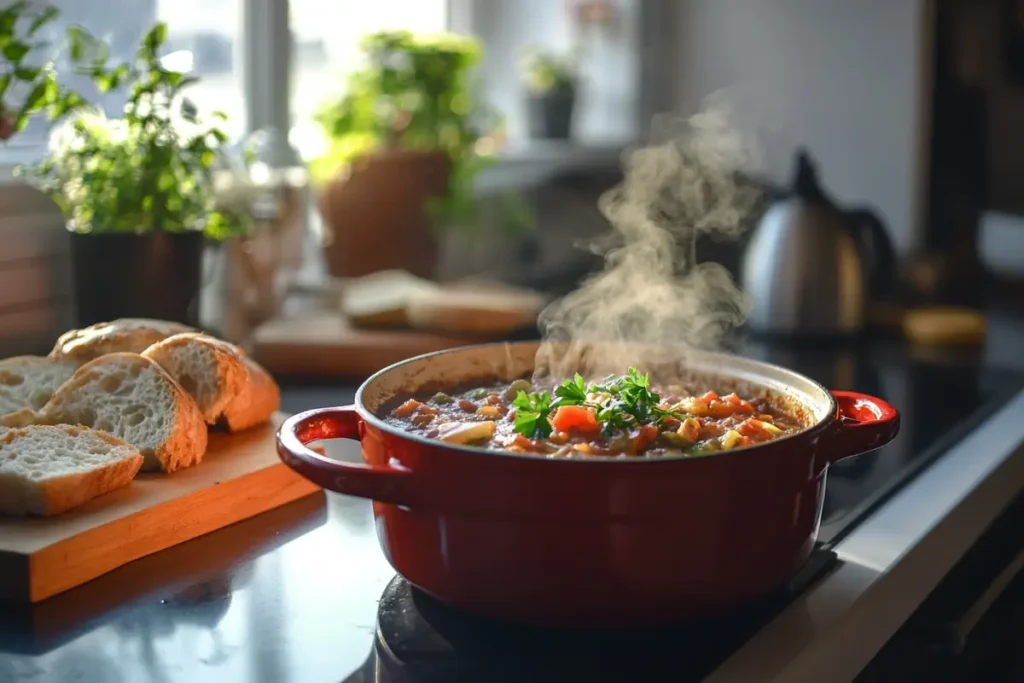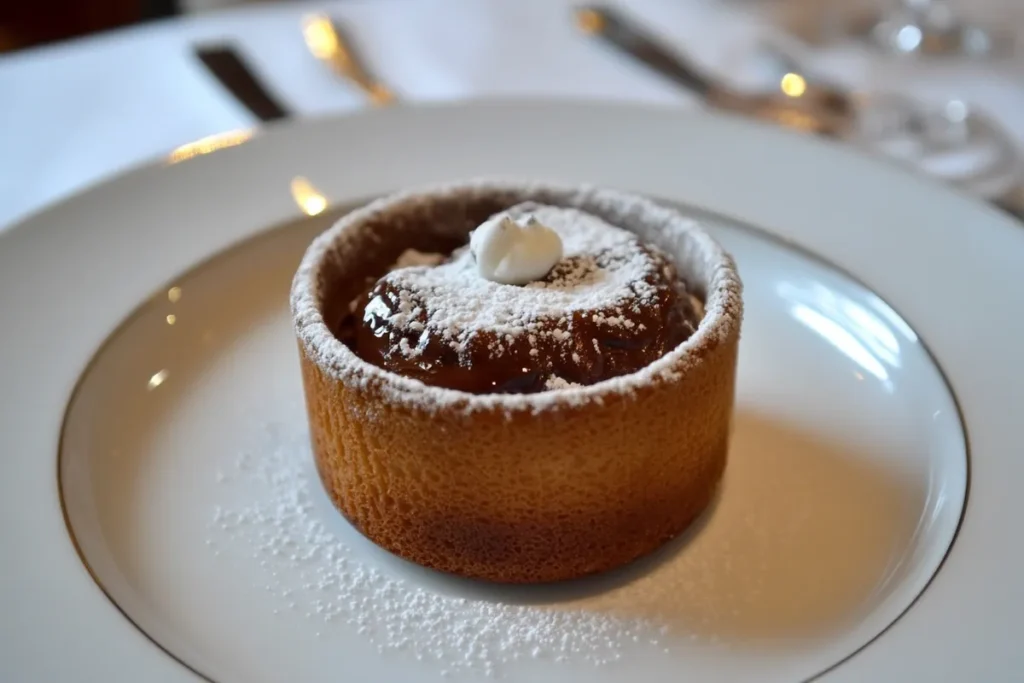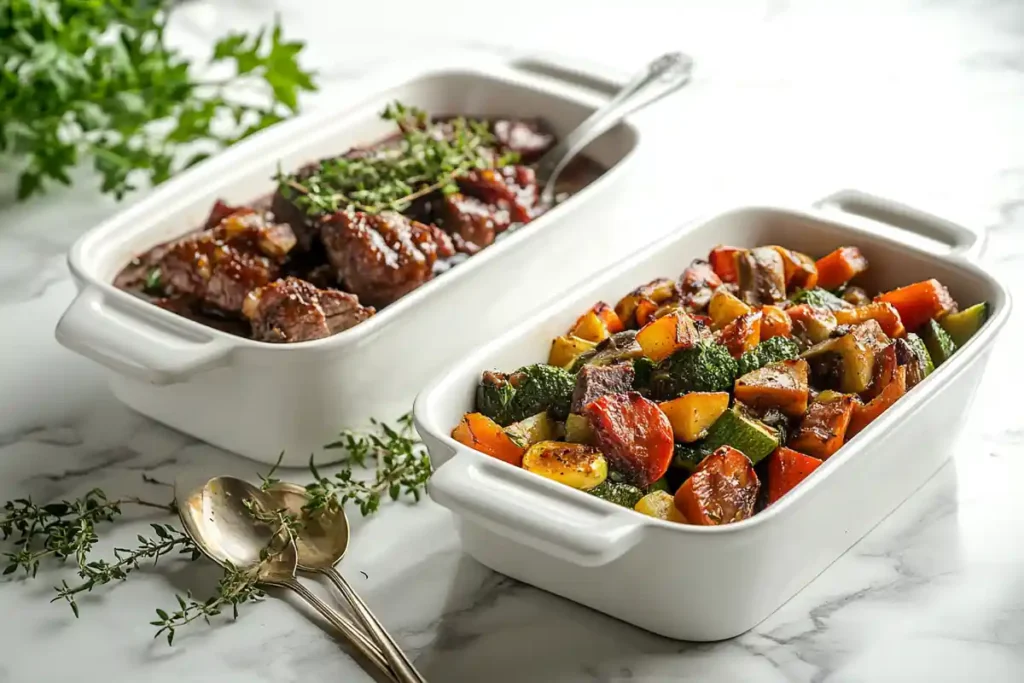A cocotte set is more than just cookware; it’s a culinary companion that transforms simple ingredients into mouthwatering dishes. Whether you’re a seasoned chef or an enthusiastic home cook, understanding how to use a cocotte set can elevate your cooking game. From slow-cooking and braising to baking and beyond, these versatile tools are indispensable in the kitchen. This article delves into the many uses of a cocotte set, its unique benefits, and how it differs from other cookware like Dutch ovens. Let’s uncover the magic behind cocottes and how they can add flavor, texture, and warmth to your meals.
Understanding the Cocotte Set
Definition and Origin of Cocotte
A cocotte, derived from the French word for “small casserole,” refers to a type of enameled cast-iron cookware designed for both functionality and style. These pots are not just a feast for the taste buds but also for the eyes, often boasting vibrant colors and intricate designs. Historically, cocottes were prized in French kitchens for their durability and exceptional heat retention, making them ideal for traditional recipes like stews and braised meats. Today, they’ve gained global recognition as essential kitchenware for every cooking enthusiast.
Components of a Cocotte Set
A typical cocotte set includes various sizes of pots, often accompanied by matching lids. The lids are designed to lock in moisture and circulate steam, which is key to producing tender, flavorful dishes. Some sets also include smaller cocottes, perfect for individual servings or desserts. These enameled pieces often feature ergonomic handles and non-reactive surfaces, ensuring ease of use and safety during cooking. From stovetop to oven, a cocotte’s versatility is unmatched.
Versatility of Cocotte in Cooking
Traditional Uses of a Cocotte

Cocottes have been the cornerstone of classic cooking for centuries, offering an array of possibilities for preparing hearty, flavorful dishes. Let’s dive into some of their most cherished traditional applications.
Slow-Cooking and Stews
When it comes to slow-cooking, a cocotte is second to none. Its thick walls and heavy lid maintain consistent temperatures, making it perfect for tenderizing tough cuts of meat or simmering soups and stews for hours. Whether you’re crafting a classic beef bourguignon or a simple vegetable stew, the cocotte locks in flavor and moisture, delivering rich, satisfying results every time. The even heat distribution ensures no hot spots, which is a common issue with thinner pots.
Braising Meats
One of the standout uses of a cocotte is braising. The method involves searing meat first and then slowly cooking it in a small amount of liquid. With its high-quality enameled interior, a cocotte easily transitions from stovetop to oven. This versatility allows you to brown your meat to perfection and then let it soak up the aromatic juices, creating melt-in-your-mouth dishes like braised lamb shanks or pot roast. The tightly fitted lid ensures the flavors remain concentrated, enhancing the overall taste of your dish.
Baking Bread
Believe it or not, cocottes are also excellent for baking. Home bakers often rely on these sturdy pots for achieving bakery-quality bread. When used for no-knead bread recipes, the cocotte traps steam during baking, creating a golden, crispy crust while keeping the interior soft and airy. Its heat-retaining properties mimic a professional bread oven, ensuring consistent results with each bake. Plus, the enameled surface prevents sticking, making cleanup a breeze.
Modern Applications of Cocotte

While traditional uses are revered, cocottes have evolved to accommodate contemporary cooking techniques.
Sautéing and Frying
A cocotte isn’t just for slow-cooked meals—it’s versatile enough for sautéing and frying, too. The flat bottom and sturdy build make it an excellent choice for browning vegetables or frying chicken. Thanks to its superior heat retention, food cooks evenly without needing constant attention.
Preparing Pasta Dishes
You can elevate pasta night with a cocotte by using it for one-pot meals. Cook pasta, sauce, and vegetables together, and the cocotte will lock in all the savory flavors. Its depth and capacity are ideal for feeding a family or hosting a dinner party.
Crafting Desserts
Small cocottes shine when it comes to creating individual desserts like molten lava cakes, crème brûlée, or even fruit cobblers. Their size and design ensure even cooking, while the stylish presentation lets you serve directly from the pot. This not only saves on dishes but also adds a touch of elegance to your table.
Advantages of Using a Cocotte
Heat Retention and Distribution
One of the most significant advantages of a cocotte is its exceptional heat retention and even heat distribution. This makes it a go-to choice for recipes that require consistent temperatures over long periods.
Material Benefits
Crafted primarily from enameled cast iron, cocottes excel in conducting and holding heat. Whether you’re simmering a delicate soup or slow-cooking a hearty stew, the even distribution prevents scorching or uneven cooking. Unlike thinner cookware, cocottes minimize the need for constant stirring, giving you time to focus on other kitchen tasks.
The enameled interior also provides a non-reactive surface, meaning acidic ingredients like tomatoes or citrus won’t corrode the pot or alter the flavor of your dish. This makes cocottes an excellent choice for recipes with vinegar-based marinades or citrus sauces.
Energy Efficiency
Because of their superior heat retention, cocottes require less energy to maintain cooking temperatures. Once heated, they hold their warmth for extended periods, allowing you to cook on lower heat settings. This translates into reduced energy bills and a smaller environmental footprint—talk about a win-win!
Durability and Longevity
Investing in a cocotte is not just a purchase; it’s a commitment to high-quality cookware that can last for generations.
Construction Quality
Cocottes are built to withstand the test of time. The durable cast iron core resists warping or cracking, even under high temperatures. The enamel coating protects against rust and wear, ensuring the pot looks as good as new even after years of use. Some premium brands offer warranties or guarantees, further solidifying the cocotte’s reputation as a lifelong kitchen companion.
Maintenance Tips
While cocottes are built to last, proper care ensures their longevity. Always allow the pot to cool before washing to prevent thermal shock. Use mild detergents and non-abrasive sponges to preserve the enamel’s integrity. And although most cocottes are dishwasher-safe, handwashing is recommended to maintain their luster.
Additionally, avoid using metal utensils that could scratch the surface. A little maintenance goes a long way in keeping your cocotte pristine for decades.
Cocotte vs. Dutch Oven
Comparing Cocotte and Dutch Oven
At first glance, a cocotte and a Dutch oven might seem interchangeable. Both are heavy-duty, enameled cast-iron pots designed for versatile cooking. However, subtle differences set them apart, and understanding these can help you choose the right one for your kitchen.
Differences in Design and Size
While the terms cocotte and Dutch oven are often used interchangeably, their design variations can influence cooking outcomes. Cocottes are typically smaller and have a more compact shape, making them ideal for precise dishes like individual desserts or small portions. Dutch ovens, on the other hand, tend to have a larger, rounder base, perfect for feeding bigger groups or preparing bulkier meals like a whole chicken.
Moreover, the cocotte’s lids often come with innovative designs like self-basting dimples, which help retain and evenly distribute moisture. This makes cocottes slightly better suited for recipes that require tender, juicy results. Dutch ovens, while versatile, may lack such specialized features.
Functional Distinctions
When it comes to cooking versatility, both excel, but they shine in different areas:
- Cocottes are exceptional for delicate recipes, like soufflés or small desserts, where precision matters.
- Dutch ovens, being roomier, are better for cooking large quantities or one-pot meals such as casseroles or chili.
Furthermore, cocottes often boast a more decorative design, making them suitable for serving directly at the table. Dutch ovens, while functional, usually lack the aesthetic appeal of their smaller counterparts.
Choosing the Right Cocotte for Your Kitchen

Factors to Consider When Selecting a Cocotte
Finding the perfect cocotte for your culinary needs isn’t just about picking the prettiest pot—it requires thoughtful consideration of size, material, and brand.
Size and Capacity
Cocottes come in various sizes, each suited for different types of recipes. Small cocottes, typically under 1 quart, are ideal for individual portions or desserts like crème brûlée. Medium-sized cocottes (around 2–4 quarts) work well for side dishes or smaller stews. For larger families or entertaining guests, a cocotte over 5 quarts is the way to go.
When choosing, consider not just your current needs but also future ones. A slightly larger cocotte can accommodate growing families or more ambitious recipes, making it a worthwhile investment.
Material and Coating
Most cocottes are made from enameled cast iron, but not all are created equal. High-quality enamel resists chipping and provides a smooth, nonstick surface that’s easy to clean. Ensure the cocotte you choose has a thick, sturdy base and a well-fitting lid to retain heat and moisture effectively.
The color and finish are also important for some cooks. Vibrant enamels can add a touch of personality to your kitchen, while neutral tones offer timeless appeal.
Brand Recommendations
Brands like Le Creuset, Staub, and Lodge are renowned for their craftsmanship and reliability. Each has unique features:
- Le Creuset: Known for vibrant colors and lightweight designs, ideal for versatile cooking.
- Staub: Features self-basting lids and matte interiors that develop a natural patina over time.
- Lodge: Offers affordability without sacrificing quality, perfect for first-time buyers.
Take time to read reviews and explore the pros and cons of each brand. Remember, a good cocotte is a lifelong investment, so choose wisely.
Frequently Asked Questions About Cocotte Usage
Cocottes are versatile and beloved tools in the culinary world, but they often spark questions among new users. Here, we address some of the most common inquiries to help you make the most of your cocotte set.
What is the purpose of a cocotte?
The purpose of a cocotte is to provide a versatile cooking vessel that excels in heat retention and even heat distribution. Cocottes are ideal for slow-cooking, braising, baking, sautéing, and serving. Their enameled cast iron design ensures your food cooks evenly without hot spots, while the tight-fitting lid locks in moisture and flavor. Whether preparing a rich stew or a crusty loaf of bread, a cocotte helps bring out the best in every dish.
What to use a cocotte for?
You can use a cocotte for a variety of cooking techniques. Some popular uses include:
- Slow-cooked meals like stews, soups, and casseroles.
- Braising meats for tender, juicy results.
- Baking bread with a crispy crust and soft interior.
- Making desserts such as molten lava cakes or fruit cobblers.
Its versatility makes it a must-have in any kitchen, perfect for both traditional and modern recipes.
What is a small cocotte used for?
Small cocottes are perfect for individual servings or small-scale recipes. They are commonly used for:
- Single-serve desserts like chocolate lava cakes or crème brûlée.
- Portion-controlled side dishes, such as mac and cheese or gratins.
- Presenting dishes beautifully at the table, directly from the oven.
Small cocottes also add an elegant touch to any meal, making them a favorite for dinner parties and intimate gatherings.
What is the difference between a Dutch oven and a cocotte?
While both are enameled cast-iron pots designed for similar uses, there are key differences:
- Size and shape: Cocottes are often smaller and more compact, while Dutch ovens are typically larger and rounder.
- Features: Cocottes may include self-basting lids, making them ideal for recipes requiring extra moisture.
- Design: Cocottes are more decorative, suitable for serving directly at the table, while Dutch ovens focus on functionality.
Both are excellent choices, but the right one depends on your cooking needs and preferences.
Conclusion
A cocotte set is much more than a piece of cookware—it’s a versatile, dependable, and stylish companion that can transform your culinary experience. From slow-cooking savory stews to baking perfect bread or crafting decadent desserts, its adaptability makes it a must-have in every kitchen. Whether you’re hosting a dinner party or preparing a cozy family meal, a cocotte ensures even cooking, rich flavors, and an aesthetically pleasing presentation.
When comparing a cocotte to other cookware, such as a Dutch oven, it’s clear that both have unique strengths. However, the cocotte’s compact design, self-basting features, and decorative appeal give it an edge for precision cooking and serving. By carefully selecting the right size, material, and brand, you’ll find a cocotte that fits seamlessly into your cooking routine and lasts for decades.
Print
Mini Cocotte Vegetable Pot Pies
- Total Time: 45 minutes
- Yield: 4 servings 1x
Description
Delight your family with these charming Mini Cocotte Vegetable Pot Pies! Packed with a medley of vibrant vegetables and a creamy, herb-infused sauce, these individual-sized pot pies are baked to golden perfection. Perfect for cozy dinners or as an elegant addition to a gathering, these little pots of comfort are both eye-catching and satisfying.
Ingredients
For the Filling:
- 2 tablespoons olive oil
- 1 small onion, finely chopped
- 2 garlic cloves, minced
- 1 medium carrot, diced
- 1 celery stalk, diced
- 1 medium potato, peeled and diced
- 1 cup broccoli florets, chopped
- 1 cup corn kernels (fresh, frozen, or canned)
- 1 cup green peas (fresh or frozen)
- 2 tablespoons all-purpose flour
- 1 ½ cups vegetable broth
- ½ cup milk (or dairy-free alternative)
- 1 teaspoon dried thyme
- ½ teaspoon dried rosemary
- Salt and pepper to taste
For the Topping:
- 1 sheet puff pastry, thawed
- 1 egg, beaten (for egg wash, optional)
- Sesame seeds for garnish (optional)
Instructions
- Preheat and Prepare: Preheat the oven to 400°F (200°C). Lightly grease four mini cocottes or oven-safe ramekins.
- Cook the Vegetables: Heat olive oil in a large skillet over medium heat. Sauté the onion and garlic until softened and fragrant. Add the carrot, celery, potato, and cook for 5 minutes. Stir in the broccoli, corn, and peas, cooking for another 2-3 minutes.
- Make the Sauce: Sprinkle the flour over the vegetables and stir well to coat. Gradually add the vegetable broth while stirring, ensuring no lumps form. Pour in the milk, thyme, and rosemary, and bring the mixture to a gentle simmer. Cook for 5-7 minutes, until the sauce thickens. Season with salt and pepper.
- Assemble the Pot Pies: Divide the vegetable mixture evenly among the mini cocottes. Cut the puff pastry into circles slightly larger than the cocotte openings. Place a puff pastry circle over each cocotte, pressing down the edges lightly. Brush with beaten egg (if using) and sprinkle with sesame seeds for a decorative touch.
- Bake to Perfection: Arrange the cocottes on a baking sheet and bake for 20-25 minutes, or until the puff pastry is golden brown and puffed.
- Serve and Enjoy: Allow the pot pies to cool slightly before serving. Place the cocottes directly on the table for a charming presentation.
Notes
- Feel free to swap out vegetables based on seasonality or personal preference.
- If you don’t have mini cocottes, you can use a larger baking dish and adjust the baking time slightly.
- For a vegan option, use plant-based milk and skip the egg wash.
- Prep Time: 20 minutes
- Cook Time: 25 minutes
- Category: Main Dish
- Method: Baking
- Cuisine: American
Nutrition
- Serving Size: 1 pot pie
- Calories: 310
- Sugar: 6g
- Sodium: 420mg
- Fat: 16g
- Saturated Fat: 4g
- Unsaturated Fat: 11g
- Trans Fat: 0g
- Carbohydrates: 38g
- Fiber: 5g
- Protein: 7g
- Cholesterol: 10mg
Keywords: Mini cocotte recipe, vegetable pot pies, individual pot pies, vegetarian comfort food

